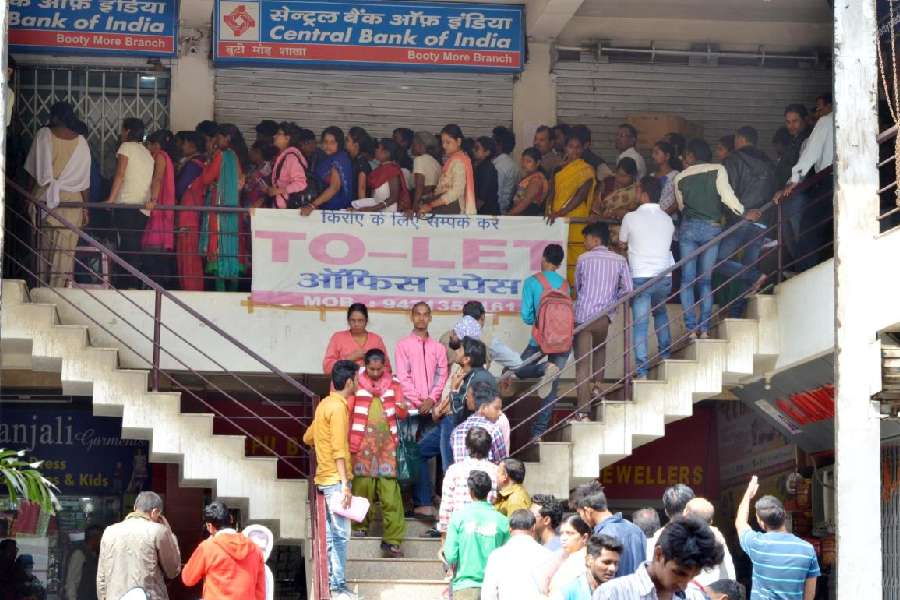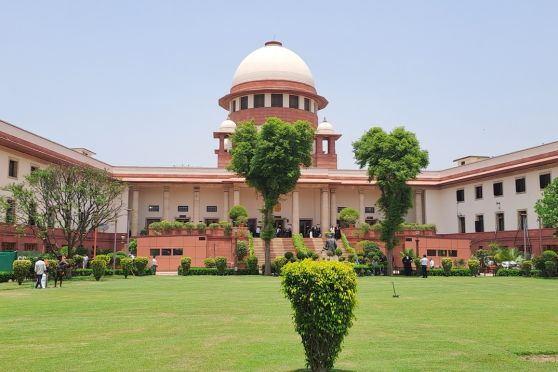 |
| Locket Chatterjee at a retail outlet for handicrafts, set up by NGO Freed, which recently steered the Beautiful Bengal project taking Bishnupur’s saris and handicrafts to Naples. The shop at Jadavpur is aimed at providing sustainable livelihood to women handicraft artists from Bengal while making the traditional items available in the city. One can browse through Baluchari and khadi weaves, dokra and clay figurines, shola, bamboo, wood and jute products, kantha-stitched handbags, patachitra, handmade paper, pickles, jam and jelly from Bishnupur, Bankura, Nadia, Murshidabad, West Midnapore and South Dinajpur. The store is open all days, from 9am to 9pm |
How does one measure the age of a child? Depends entirely on the service he renders. A recent survey by volunteers with CRY, the child rights organisation, addresses this question as it explores viewpoints of the other side: people who employ children. Conducted in the city, the survey is based on the responses of 300 people who employ children between 5 and 18 years in their establishments: as mechanics, workers in shops, dhabas, tea stalls, factories and in homes as domestic workers.
About 54 per cent of the employers did not go to school themselves or only received education up to the elementary level.
The law (Child Labour Prohibition and Regulation Act 1986) states that children below 14 years of age can work in occupations and processes that have not been defined as hazardous. But in 2012 an amendment passed by the Union Cabinet, awaiting to be approved by Parliament, calls for a blanket ban on any kind of work for children till 14 years of age.
But it doesn’t matter what the law says. Three out of 10 employers perceive an individual to be a child till the time he/she has attained the age of 10. One out of three children works for more than eight hours a day. About 55 per cent of the children employed do not get a single day off from work in the 15-18 age group. The situation deteriorates with the lower age group, as 62 per cent of the younger children do not get a day off as they are easier to exploit.
About 53 per cent of the children are in the 15-18 age group and 45 per cent in the 5-14 age group. The survey does not talk about the children’s wages.
It is not as if the law is unknown. Seven out of 10 employers are familiar with the term child labour and six out of 10 are aware that children in the 6-14 age group should be in school. But awareness of the law has not deterred them from employing children as there is no fear of prosecution. “According to the official government statistics for the enforcement of the Child Labour Prohibition and Regulation Act, from 1997 to 2005, out of the 1,43,804 violations detected, only 59,026 prosecutions were launched and 21,481 convictions obtained. This means that only around 38 per cent of the violators of the law were convicted and around 62 per cent were acquitted,” says Trina Chakraborti, general manager, volunteer action, CRY.
At the same time, 36 per cent of employers have made arrangements to ensure that children employed with them attend school. That may not be as good as it sounds: CRY thinks it shows that despite being aware that a child needs education, the employers have chosen children to work and it is extremely tiring for a child to work and then study.
“There is clear evidence of it being a vicious cycle of illiteracy, ignorance and apathy which perpetuates the employment of child labour,” says the survey.
“We strongly recommend that the law should abolish all forms of child labour till the age of 18,” stresses Abhik Bhattacharya, senior manager, media advocacy, CRY East.
To serve or not
Eight speakers deliberated on whether Social Service is More Publicity than Philanthropy at a debate presented by the Rotary Club of North Calcutta, in association with The Telegraph.
Kunal Sarkar, cardiologist and founder-member of Calcutta Debating Circle, Swati Chatterjee, journalist, Raju Raman, expert in film studies, and P.R. Ramesh, corporate professional, spoke for the motion. Sandeep Chatterjee, neurosurgeon, Shekhar Mehta, Rotarian, Gautam Mohan Chakrabarti, former commissioner of police, and Swati Gautam, t2 columnist, spoke against it.
Mahalaya magic
It will be 80 years of waking up to the baritone of Birendra Krishna Bhadra on Mahalaya this year.
Mahisasuramardini is the oldest surviving radio programme and predates All India Radio and Akashvani.
The popularity of the half-hour-long audio montage composed by Baidyanath Bhattacharya (Bani Kumar) of Chitra Samsad, North Calcutta, with recitation by Bhadra remained was such that an attempt by AIR in 1976 to replace Bhadra with Uttam Kumar was rejected by listeners.
The programme was broadcast live till 1958 and every year Pankaj Kumar Mullick and Birendrakrishna Bhadra would conduct a month-long rehearsal.
A documentary on the making of the programme will be screened at Rabitirtha in New Town on Sunday.
Arindam Saha Sardar, a young documentary filmmaker from Uttarpara, has also compiled a DVD with the full script of the programme along with rare photographs of the legends who were part of Mahisasuramardini. It is the result of five years’ research work.
 |
| Gouranga Kuila at work |
Artist turns lyricist
He is one of the best-known theme-makers in the city’s Puja circuit with a national award in his kitty. He has created a Buddha out of puja utensils (chosen for preservation at the museum by Rabindra Sarobar) and a pandal out of an elephant howdah.
This year when visitors walk into the 18ft Tibetan mask that will be the façade of the Tridhara Sammilani pandal near Deshapriya Park, they will hear Ustad Rashid Khan sing the puja’s theme song Sraban dharay dhuye suddha saratey. Few will know that the hand which made the masks adorning the pandal, inspired by the Singhi Chham masked lion dance, also wields a pen and wrote the lyrics for the song. “I write while travelling by road from my Midnapore home to Calcutta. I like to write folk songs. Some have been sung by folk bands like Mohul and Khyapa,” said Gouranga Kuila.
“When he heard that we were planning to ask Rashid Khan to compose and record the song, he put in a request to be allowed to write the lyrics himself. We knew that the way he would bring out the essence of this puja no one could do better. So we immediately agreed,” said Debashis Kumar of Tridhara.
Soon Khan was sitting with the lyrics at Prasad Studio in Southend Park. “It had as many as 17 lines. I needed three days to properly compose and record it,” said the classical vocalist.
A team of Singhi Chham folk dancers has been invited from Sikkim for the Puja days. The buzz is they might be asked to perform to the theme song besides the traditional lion dance beat.
 |
| Malabika Sarkar, former vice-chancellor of Presidency University, addresses Dr. Daisaku Ikeda’s 2014 Peace Proposal. The symposium at Kala Kunj was also attended by Justice (retired) Altamas Kabir, former Chief Justice of India, and Sujit K. Basu, former Visva-Bharati vice-chancellor, apart from members of the Bharat Soka Gakkai |
Crusade for water
A little boy turns Batman to save water in Who is Your Superhero? — a short film made by chartered accountant Soham Sen that has been selected for the International Environmental Film Festival in Rio de Janeiro, as India’s official entry.
The film with a subtle but critical message about the need to conserve environment (water in this case) through the action of a young protagonist.
A kid, left alone in house, sees water trickling from tap while taking a chocolate from the fridge and makes an all-out effort, in emulation of his cartoon hero, to save the water loss. The film ends with a shot of the kid standing with his arms slung across his chest, much like Batman after he saved Gotham City from Joker.
“We made the film in early 2014 and it received acclaim in a festival in Kerala,” said Soham.
gender forum
 |
In a build-up to a Global Men’s Symposium in Delhi this November, organisations in Calcutta — Swayam, Kolkata Rista, Ebong Alap, Sanjog — and Forum to Engage Men from Jharkhand brought together researchers, practitioners, advocates and activists for a
two-day conference on the need to integrate men and boys in issues of gender equality and social justice. “The idea was to provide men a space to articulate on these issues and look at a different paradigm in the framework of gender because the focus has always been women. It is also important to look at the point where the problem originates and get men to address issues of patriarchy and masculinity so that they too can set themselves free,” said Anuradha Kapoor (picture right by Bishwarup Dutta) of Swayam, one of the organisers.
Contributed by Chandrima S. Bhattacharya, Showli Chakraborty, Dipankar Ganguly, Sudeshna Banerjee and Jayanta Basu










